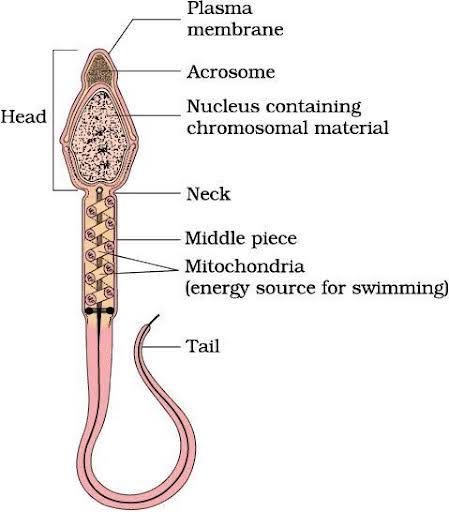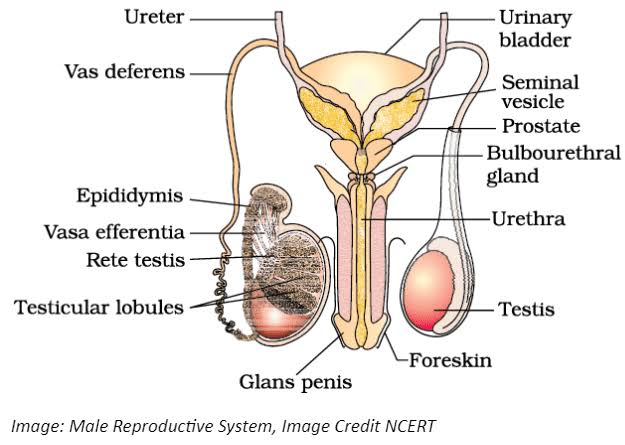Human sperm

Human sperm is a male reproductive cell, also known as a spermatozoon. It is a highly specialized cell that plays a crucial role in sexual reproduction by fertilizing the female egg, or ovum. A sperm cell consists of three main parts: the head, midpiece, and tail. The head contains the nucleus, which houses the genetic material (DNA) that will combine with the DNA in the egg to form a new organism. The head is also covered by an acrosome, a cap-like structure that contains enzymes essential for penetrating the egg during fertilization.
The midpiece is packed with mitochondria, which produce the energy required for the sperm’s movement. The tail, or flagellum, propels the sperm towards the egg through a whip-like motion. Sperm are produced in the testes and stored in the epididymis until ejaculation. During ejaculation, millions of sperm are released, but only one typically succeeds in fertilizing the egg.
Sperm production, known as spermatogenesis, begins at puberty and continues throughout a man’s life. Healthy sperm production and motility are essential for male fertility, with various factors such as lifestyle, diet, and overall health influencing sperm quality.
mail reproduction system

The term “mail reproduction system” generally refers to systems used to duplicate and distribute mail or documents, often in large quantities, for communication or record-keeping purposes. This system can be either manual or automated.
In traditional manual systems, mail reproduction involved physical copying of letters, invoices, or other documents using carbon paper, typewriters, or photocopy machines. These copies were then distributed to multiple recipients via postal services. This method was labor-intensive and time-consuming.
In modern contexts, mail reproduction systems are highly automated and digital. They include email forwarding systems, mass mailing software, and document management systems that can replicate and distribute digital documents to a wide audience instantly. These systems often integrate with Customer Relationship Management (CRM) software to personalize mass communications, making it easier to send tailored messages to thousands of recipients simultaneously.
The evolution of mail reproduction systems has greatly enhanced the efficiency and speed of communication, especially in business settings. They are essential tools for companies needing to maintain consistent communication with clients, employees, or stakeholders, enabling seamless and efficient information dissemination.
Female reproductive system

The female reproductive system is a complex network of organs responsible for producing eggs (ova), supporting fertilization, and nurturing the developing fetus. It consists of both external and internal structures. The external structures include the labia majora, labia minora, clitoris, and vaginal opening, which protect the internal organs and play a role in sexual pleasure.
Internally, the system comprises the ovaries, fallopian tubes, uterus, and vagina. The ovaries are responsible for producing eggs and hormones like estrogen and progesterone. Once released, an egg travels through the fallopian tubes, where fertilization by sperm can occur. The fertilized egg then moves to the uterus, a muscular organ where it can implant and develop into a fetus. The lining of the uterus, called the endometrium, thickens each month in preparation for a potential pregnancy.
If fertilization doesn’t occur, the endometrium is shed during menstruation. The cervix, located at the lower end of the uterus, connects to the vagina, which serves as the birth canal during delivery. The entire reproductive cycle is regulated by hormones, ensuring the proper function of each component.

Get involved!
Comments